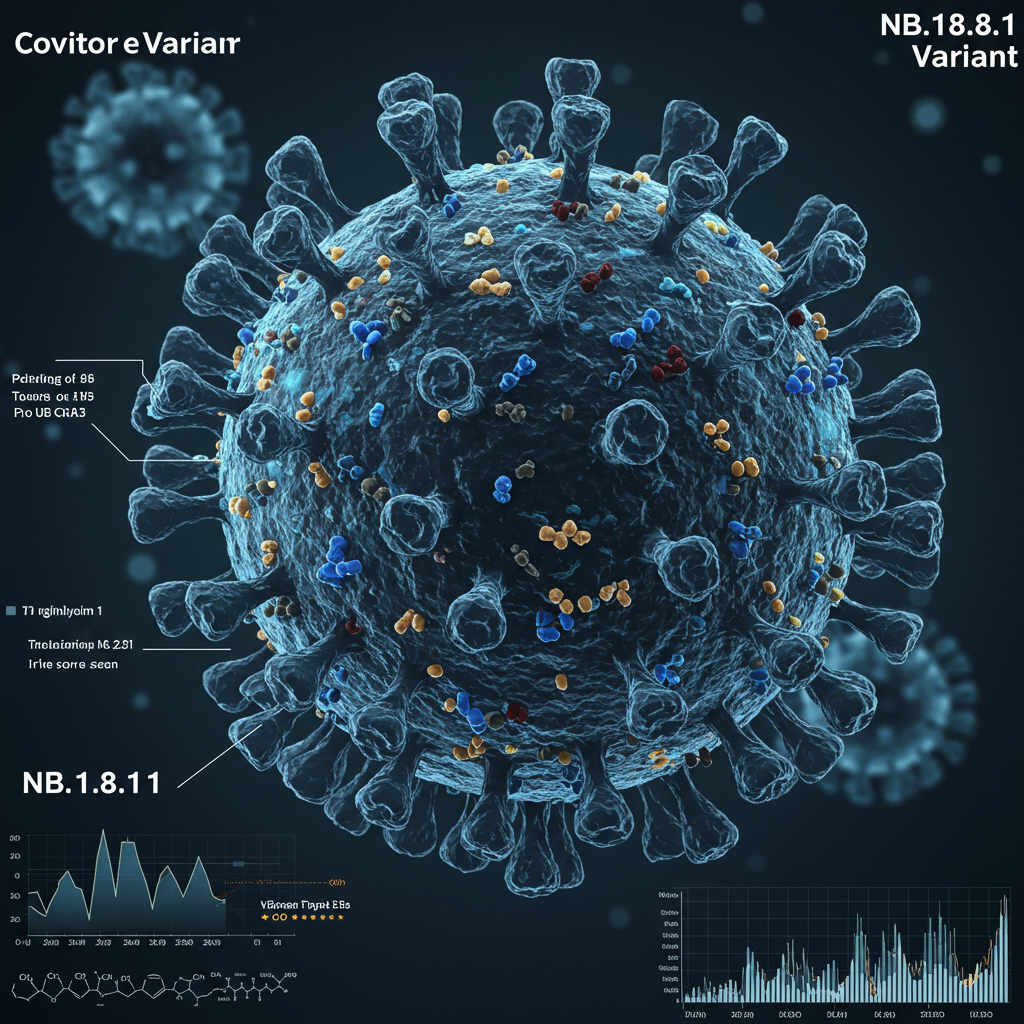HEALTH
“Razor Blade Throat” & New COVID Variant: What to Know
Patients report excruciating sore throat symptom associated with the new NB.1.8.1 variant, nicknamed ‘Nimbus’.
By [Your Name]
Published [Current Date]
A striking symptom, described by many as feeling like swallowing “razor blades” or “shards of glass,” is currently gaining attention as cases of a new COVID-19 variant rise. This variant, officially designated NB.1.8.1 and informally dubbed ‘Nimbus,’ is quickly becoming a dominant strain.
Patients and doctors alike are reporting this exceptionally painful sore throat associated with NB.1.8.1 infections. The term “razor blade throat” has gained traction online, reflecting the severity of the discomfort. Experts believe this intense pain is caused by the virus directly infecting and irritating the cells in the throat.
Understanding the Nimbus Variant (NB.1.8.1)
The NB.1.8.1 variant has been classified by the World Health Organization (WHO) as a “variant under monitoring,” a designation based on its rapid global spread and mutations in its spike proteins. Data indicates it accounted for a significant percentage of cases in the U.S. by early to mid-June, quickly rising to become one of the most common variants.
Often referred to as ‘Nimbus’ – a nickname coined partly due to the transition away from Greek letter names – this variant is a descendant of the Omicron lineage. It possesses genetic advantages, including mutations that appear to enhance its ability to bind to human cell receptors, potentially making it more transmissible. Some research suggests it may also have high immune evasion capabilities.
While concerns exist about its rapid spread and potential to contribute to summer case surges, current information suggests that NB.1.8.1 does not appear to cause more severe illness or different outcomes on average compared to previous strains. However, even a highly transmissible variant that causes seemingly “milder” illness can still lead to significant hospitalizations, deaths, and cases of Long COVID simply due to infecting more people.
Beyond “Razor Blade Throat”: Other Symptoms
While the severe sore throat is a notable hallmark, infection with the Nimbus variant can present with a range of other symptoms common to COVID-19 and other respiratory illnesses. These may include:
Fever or chills
Cough
Congestion or runny nose
Fatigue
Muscle aches
Headache
Difficulty breathing (though less common with this variant)
Diarrhea or nausea (less common)
Symptom presentation can vary greatly depending on individual factors like vaccination status, prior infections, and overall health. Notably, some doctors observe a shift in prominent symptoms with newer variants like Nimbus compared to earlier ones, with severe sore throat becoming more noticeable than, say, the loss of taste and smell often seen in the pandemic’s earlier stages.
Is Any Severe Sore Throat COVID-19?
It’s crucial to understand that while “razor blade throat” is linked to the Nimbus variant, a severe sore throat can be caused by many factors other than COVID-19. Pharyngitis, the medical term for a sore throat, is a common symptom of various viral infections (including colds and flu), bacterial infections (like strep throat), allergies, acid reflux, dryness (such as from sleeping with your mouth open), and other irritants.
The degree of soreness alone is not a reliable way to determine the cause of your throat pain. Therefore, self-diagnosing based solely on the intensity of the sore throat is not recommended.
When to Seek Medical Advice
Given the multiple potential causes of a severe sore throat, it’s important to consult a healthcare professional for an accurate diagnosis, especially if your symptoms are persistent or severe. Seek medical attention if you experience:
A severe sore throat that lasts longer than a week.
Difficulty breathing or chest tightness.
A high fever that persists for several days.
Inability to drink fluids due to throat pain, potentially leading to dehydration.
Worsening symptoms over time.
A doctor can perform a physical examination, consider other symptoms, and conduct diagnostic tests, such as swabs for strep throat or COVID-19, to determine the underlying cause and appropriate treatment. Keep in mind that rapid at-home COVID-19 tests can sometimes produce false negatives, so clinic-based testing might be more accurate.
Finding Relief for Sore Throats
Treatment for a sore throat depends on its cause. If it’s due to a viral infection like COVID-19, treatment focuses on managing symptoms. Remedies that can help soothe the pain include:
Over-the-counter pain relievers: Medications like ibuprofen or acetaminophen can help reduce pain and inflammation.
Warm salt water gargle: Gargling with a mixture of about ½ teaspoon of salt in a cup of warm water can help ease swelling and irritation.
Throat lozenges or sprays: Those containing ingredients like menthol or benzocaine can provide temporary numbing relief.
Warm liquids: Sipping on tea (especially with honey and lemon) or broths can be very soothing. Honey is also particularly noted for its ability to help with cough and sore throat.
Hydration: Drinking plenty of fluids is essential, particularly if severe pain makes swallowing difficult and risks dehydration.
- Humidifier: Adding moisture to the air can help prevent throat dryness and irritation.
- www.foxnews.com
- www.salon.com
- patch.com
- www.forbes.com
- timesofindia.indiatimes.com
For bacterial infections, antibiotics may be prescribed. Acid reflux might be managed with antacids or other medications.
Staying Prepared
Despite public perception, COVID-19 remains a circulating virus causing illness, hospitalizations, and Long COVID. With variants like Nimbus spreading rapidly, staying informed and prepared is wise.
Prevention methods remain largely the same: staying up-to-date with COVID-19 vaccination helps protect against severe illness (though vaccine accessibility and recommendations have seen recent changes). Practicing good hand hygiene, wearing high-quality masks (like N95 respirators) in crowded or poorly ventilated indoor spaces, maintaining physical distance from those who are sick, and ensuring good indoor ventilation are all effective measures against transmission.
While the “razor blade throat” symptom associated with the Nimbus variant is intensely unpleasant, understanding the potential causes and knowing when to seek professional medical help is key to managing symptoms and protecting your health. Continued vigilance and preparedness are essential as the virus evolves.



